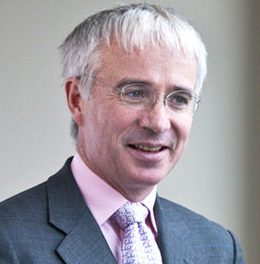
Sensible family planning only possible with access to contraceptives
At the halfway mark of the FP2020 initiative to boost the use of modern contraceptives, it was found that more than 300 million fertile females in the world’s 69 poorest countries, are regular users of contraceptives.
FP2020, a family planning partnerhip was launched at the historic London Summit on Family Planning in 2012. The Summit called for unprecedented global political commitments and resources to enable 120 million more women and girls to use contraceptives by 2020.
This week, at the midway mark, the FP2020 Momentum at the Midpoint 2015-2016 report was released to provide an update on the project and to mark out the progress to date.
The data featured in the report reveals noteworthy accomplishments as well as some significant challenges for the partnership.
Regionally there are compelling examples of success. For example, in Eastern and Southern Africa, for the first time ever more than 30% of women and girls are now using a modern method of contraception. In West Africa, where contraceptive use has been historically low, the Ouagadougou Partnership has surpassed its goal of reaching 1 million additional women and girls with modern contraception between 2011 and 2015, and is now aiming to reach 2.2 million additional users by 2020.
Despite the significant progress, collectively the FP2020 partnership has not reached as many people as hoped—the data show the efforts are off track by some 19 million women and girls. In addition, the sector faces a sizable financing gap for family planning programs, and significant questions loom around how to ensure that enough contraceptives supplies are available for the unprecedented numbers of women and girls who need them.
Tackling these challenges will require a strategic and coordinated approach moving forward among many stakeholders. The report calls on the family planning community to urgently accelerate progress through investment and interventions grounded in the wealth of data and evidence now available.
“While we have not reached as many people as we had hoped by this time, the richness of the data now available enables us to peel back the layers and study the situation on a country-by-country basis, revealing a strikingly varied landscape of progress,” said FP2020 Executive Director Beth Schlachter.
As in previous years, the report also delves into the funding landscape, highlighting how mobilizing the necessary resources to sustain family planning services is a critical component of success and a vital priority for donors that provided US$1.3 billion for bilateral family planning in 2015, a 6% decrease from the previous years’ funding levels. This is the first reduction witnessed since the tracking of these efforts began in 2012 by the Kaiser Family Foundation. The decrease can largely be attributed to currency fluctuations and the appreciation of the US dollar. “Addressing the financing gap for family planning programs, ensuring a sufficient and diverse supply of contraceptives, and improving the visibility and tracking of domestic and donor funding alike continue to be central priorities for our entire sector, including and importantly through the UNFPA (United Nations Population Fund) Supplies Program,” Schlachter said.
In the coming years, continued strengthening of country, regional, and global partnerships, and forging new collaborations with a variety of stakeholders, will be vital to reaching more women and girls.
Four FP2020 partners renewed their commitments this year with ambitious new objectives, pledging to build on the contributions they have already made and go even further: the Federal Government of Germany; International Planned Parenthood Federation; Intrahealth International; and FHI 360.
In 2016, modern contraceptive use by 300 million women across the 69 focus countries averted an estimated 82 million unintended pregnancies, 25 million unsafe abortions, and 124,000 maternal deaths.












































